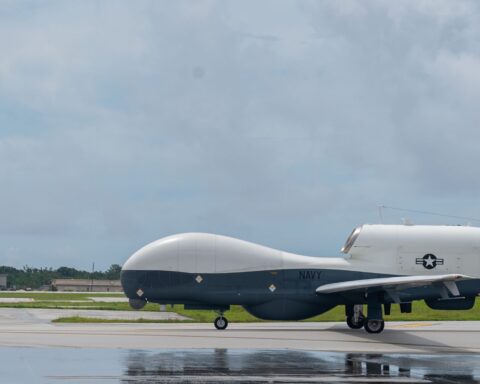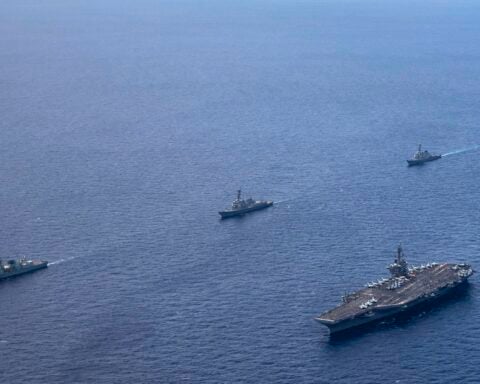The following is the May 16, 2024, Congressional Research Service In Focus report, China’s “One Belt, One Road” Initiative: Economic Issues.
From the report
The People’s Republic of China (PRC or China) in 2013 launched an ambitious and multifaceted foreign economic policy initiative—One Belt, One Road—to expand China’s global economic reach and influence. In 2015, China’s leaders changed the English name to the Belt and Road Initiative (BRI), possibly to deflect from the initiative’s focus on developing China-centered and controlled global ties in a hub and spoke format. The Communist Party of China (CPC) incorporated the initiative into its Charter in 2017 and reaffirmed the effort’s significance in 2022 at its 20th Party Congress. Some participating governments say they value the initiative for filling infrastructure gaps. Other governments, and some in Congress, assess that One Belt, One Road projects advance PRC geopolitical and economic goals while undercutting U.S. influence and interests.
Scope and Objectives
One Belt, One Road aims to develop China-centered and -controlled global infrastructure, transportation, trade, and production networks. Initially focused on Asia, Europe, and Africa, the scope has become global and encompasses over 100 countries, including the United States. It includes a land-based “Silk Road Economic Belt,” a “21st Century Maritime Silk Road,” and a “Digital Silk Road” that seeks to promote PRC information and communications technology (ICT) supply chains, optical cable and satellite networks, and a “Health Silk Road.” The effort emphasizes policy coordination, trade and investment facilitation, dispute settlement, tourism, student and personnel exchanges, and priorities in China’s 14th Five-Year Plan (2021-2025), such as health, research, and standards setting.
One Belt, One Road projects in energy, ICT, manufacturing (industrial parks and trade zones), and transportation (rail, roads, ports, and airports) look to vertically integrate PRC production supply chains, technology infrastructure, and transportation networks. The effort involves technology and financial integration that expands the use of China’s digital platforms and currency. It seeks to expand PRC firms’ presence overseas, create new markets for China’s goods and services, and secure access to foreign sources of agriculture, energy, and strategic commodities. Projects also aim to develop China’s interior regions, employ PRC workers overseas, and offload excess industrial capacity.
At the One Belt, One Road forum in 2023, China’s leader Xi Jinping emphasized areas of focus to include “high quality development”; intermodal and green infrastructure; pilot digital trade zones; science and technology cooperation; a “compliance evaluation system” to address corruption; and cooperation in energy, tax, finance, think tanks, media, and culture. In 2021, Xi presented at the United Nations (U.N.) General Assembly a Global Development Initiative (GDI) to complement One Belt, One Road with “small and smart” development projects. To date, GDI projects have been in food and medicine.
China’s Investment and Financing
China’s use of onshore financing and special purpose investment vehicles complicates the ability to track offshore activity. One Belt, One Road is an umbrella initiative, and projects may be specifically or loosely tied to the effort. As a result, many groups track PRC cross-border financing, investment, and overseas projects generally.
PRC overseas development finance between 2008 and 2021 totaled an estimated $498 billion, rivaling $601 billion in World Bank lending over that time, according to Boston University’s Global Development Policy Center. China’s global outward foreign direct investment (FDI) stock stood at $2.9 trillion (7% of world total) in 2022, up from $34.7 billion (0.5% of world total) in 2001, while the United States accounted for $8.0 trillion, or 20% of global outward FDI stock in 2022 (down from 32% in 2001), according to official country data compiled by the U.N.
China’s outward FDI flows peaked in 2016, while cross-border contracts have been stable in agriculture, energy, minerals, finance, infrastructure, technology, and shipping. The overall value and size of PRC projects has declined with China’s economic slowdown and debt restructuring requests (e.g., Ecuador, Sri Lanka, and Zambia). The average commitment from China Export-Import Bank (CHEXIM) and China Development Bank (CDB) in 2016 was $580 million per project, compared with $461 million in 2021. China may be at an inflection point in implementing existing projects and face a delay in activity after the pandemic. China’s domestic slowdown, as it did in 2009, could fuel PRC expansion overseas in key sectors.
Download the document here.





